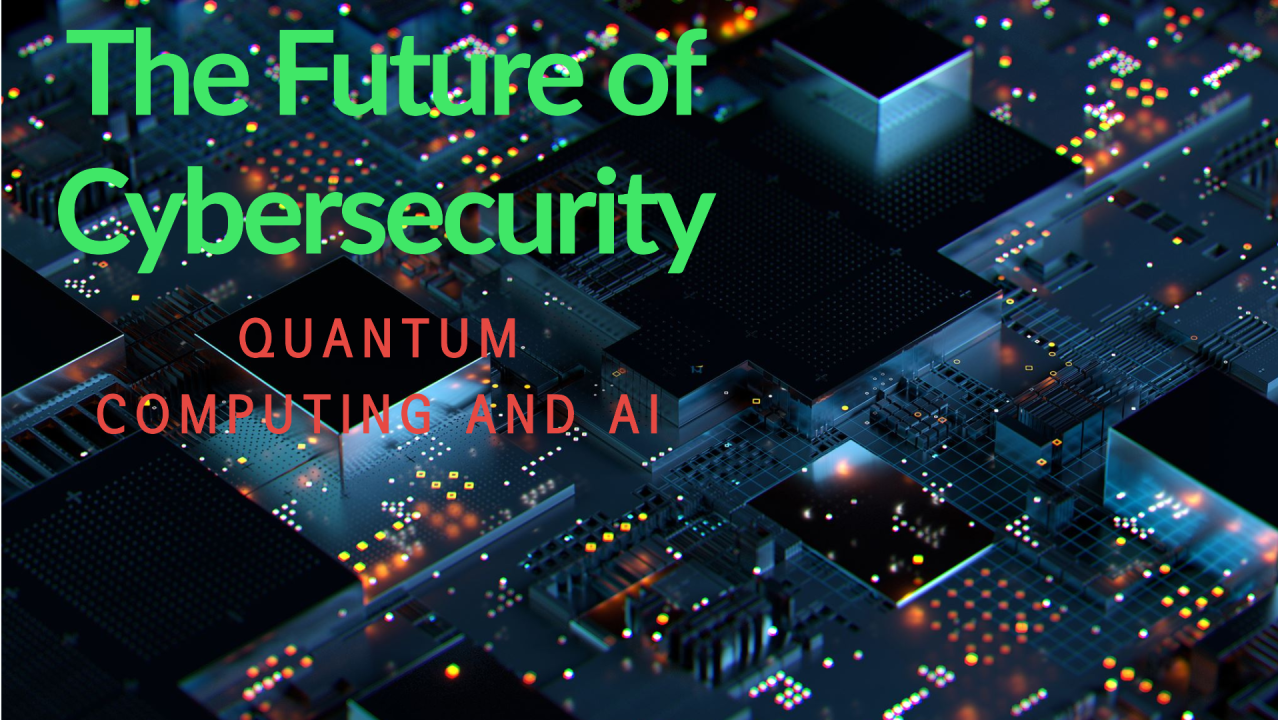Duration: 10 Weeks (or Self-Paced)
Level: Intermediate to Advanced
Format: Video Lessons, Labs, Case Studies, Readings, Code Projects, Final Capstone
Tools & Platforms: Python, Scikit-learn, TensorFlow, Wireshark, OpenSSL, IBM Quantum Safe, CRYSTALS-Kyber, NIST PQC Suite, Splunk, Snort, Maltrail
Course Objective
To train cybersecurity professionals and developers in the integration of quantum-resilient encryption standards and AI-powered threat detection, preparing them to secure systems against quantum-era attacks and adapt to the next generation of cyber threats.
Module 1: The Cybersecurity Landscape of Tomorrow
Topics Covered:
-
Evolving Threat Landscape in the Quantum and AI Era
-
Cybersecurity in the Age of AI and Quantum Computing
-
Why Current Cryptography is at Risk
-
Overview of AI’s Role in Offensive and Defensive Security
-
Real-World Incidents and Future Predictions
Learning Outcome:
Understand the need for post-quantum security and AI-driven defense strategies.
Activities:
-
Analyze a real cybersecurity breach that could have been mitigated by AI or PQC
-
Research and summarize emerging threats from quantum computers
Module 2: Foundations of Cryptography and Quantum Vulnerabilities
Topics Covered:
-
Classical Cryptography (RSA, ECC, AES, SHA)
-
Key Exchange and Digital Signatures
-
Quantum Computing Basics (Qubits, Shor’s Algorithm)
-
How Shor’s and Grover’s Algorithms Break RSA and ECC
-
Introduction to Quantum Threat Modeling
Learning Outcome:
Gain a clear understanding of how quantum computing threatens current cryptographic systems.
Activities:
-
Demonstrate a classical key exchange and highlight vulnerabilities
-
Simulate Grover’s algorithm effect on brute-force security
Module 3: Post-Quantum Cryptography (PQC) and Algorithms
Topics Covered:
-
What is Post-Quantum Cryptography?
-
Overview of NIST PQC Standardization Process
-
PQC Families: Lattice-based, Code-based, Hash-based, Multivariate, Isogeny-based
-
Focus Algorithms: CRYSTALS-Kyber, Dilithium, Falcon, Sphincs+
-
PQC Implementation Tools (Open Quantum Safe, PQClean, liboqs)
Learning Outcome:
Understand and use post-quantum cryptographic algorithms in practice.
Activities:
-
Implement Kyber or Dilithium in a sample Python application
-
Replace RSA with a NIST-approved PQC algorithm in a TLS configuration
Module 4: Secure System Design for the Quantum Future
Topics Covered:
-
Hybrid Cryptographic Systems (PQC + Classical)
-
Transitioning Legacy Systems to Quantum-Safe Architectures
-
PQC in TLS/SSL, VPNs, and Certificate Chains
-
Storage, Authentication, and Blockchain with PQC
-
Government and Industry Adoption (NSA, IBM, Microsoft, Cloudflare)
Learning Outcome:
Design and plan migration strategies toward quantum-resilient security.
Activities:
-
Simulate a TLS handshake with hybrid cryptographic negotiation
-
Design a secure blockchain ledger that supports PQC
Module 5: AI in Modern Cybersecurity
Topics Covered:
-
AI vs Traditional Security Approaches
-
Threat Detection with Supervised Learning
-
Unsupervised Learning for Anomaly Detection
-
Reinforcement Learning for Intrusion Prevention
-
Natural Language Processing in Phishing Detection
Learning Outcome:
Utilize AI techniques to detect, classify, and respond to cybersecurity threats.
Activities:
-
Train a machine learning model to detect malware based on features
-
Use unsupervised clustering to find outliers in network traffic logs
Module 6: Building AI-Powered Intrusion Detection Systems
Topics Covered:
-
Data Sources: Logs, Packets, Endpoints
-
Feature Engineering and Dataset Labeling
-
Building IDS with Scikit-learn, TensorFlow, or PyTorch
-
Evaluating Model Performance: Accuracy, Precision, ROC
-
Adversarial Examples in IDS and AI Poisoning Attacks
Learning Outcome:
Build and deploy an AI-based intrusion detection or anomaly detection system.
Activities:
-
Build a binary classifier to detect port scans or brute-force attacks
-
Generate adversarial samples and test model robustness
Module 7: AI in Threat Intelligence and Response Automation
Topics Covered:
-
AI-Powered SOCs and SIEM Systems
-
Predictive Analytics for Threat Hunting
-
MITRE ATT&CK + AI Integration
-
SOAR Platforms (Security Orchestration, Automation, and Response)
-
Case Study: Using Splunk with ML Toolkit
Learning Outcome:
Automate threat detection and response using AI models integrated into modern SOC tools.
Activities:
-
Design an AI-driven alert prioritization system
-
Build a playbook in a SOAR tool that uses ML-based scoring
Module 8: Securing AI Systems (Adversarial AI & Defenses)
Topics Covered:
-
Adversarial Attacks on ML Models (FGSM, PGD)
-
Model Poisoning and Data Integrity
-
Differential Privacy and Secure Model Training
-
Explainability (XAI) in Security Context
-
Red-Teaming AI Systems
Learning Outcome:
Understand how to defend AI models against exploitation and manipulation.
Activities:
-
Generate and test an adversarial attack against a simple ML classifier
-
Use LIME or SHAP to explain AI decisions in a security context
Module 9: Policy, Ethics, and Governance in AI and Quantum Security
Topics Covered:
-
Ethics of AI in Surveillance and Cybersecurity
-
Bias, Transparency, and Fairness
-
Regulatory and Compliance Considerations (GDPR, CCPA, ISO/IEC 27001)
-
Export Control and Cryptographic Laws in PQC Deployment
-
Cybersecurity Governance Models in Quantum-Ready Organizations
Learning Outcome:
Apply ethical and policy frameworks to secure and govern AI and PQC implementations.
Activities:
-
Debate ethical concerns around AI-enabled surveillance
-
Draft a quantum-resilient cybersecurity policy for a fictional organization
Module 10: Capstone Project and Career Development
Capstone Project Options:
-
Build a secure messaging app using post-quantum encryption
-
Train and deploy an AI-powered threat detection system using real-world datasets
-
Simulate a secure quantum-resilient communication protocol
-
Conduct a red-teaming exercise on an AI-based security system
Final Deliverables:
-
Project code and report
-
Architecture diagrams
-
Recorded demo and threat modeling explanation
Career Insights:
-
Job Roles: Cybersecurity Analyst, Security Engineer, AI Security Specialist, Quantum Risk Advisor
-
Certifications: Certified Ethical Hacker (CEH), CISSP, Certified AI Practitioner, NIST PQC Bootcamps
-
Building a Competitive Resume with GitHub Projects and Research Papers
Certificate of Completion:
Awarded upon completing all modules and submitting the final capstone project.
Bonus Resources
-
Quantum Threat Timeline Chart
-
AI Security Toolkit (Pre-trained Models + Data Sets)
-
Open-source PQC Libraries and Sample Integrations
-
Top Research Papers & GitHub Repos for Follow-up
-
Weekly Challenges and Capture the Flag (CTF) Puzzles
Teaching Methodology
-
Expert-led video lectures with real-world examples
-
Practical labs using industry tools and open datasets
-
Assignments and quizzes at the end of each module
-
GitHub-ready projects and documentation practices
-
Optional live mentoring and discussion groups
-
Final project for portfolio and presentation skills
Target Audience
-
Cybersecurity professionals preparing for the quantum era
-
AI/ML engineers aiming to work in the security field
-
Government, military, and enterprise infrastructure managers
-
Computer science students and researchers in cryptography or threat detection
-
Technical consultants or policy developers exploring ethical AI and quantum defense







